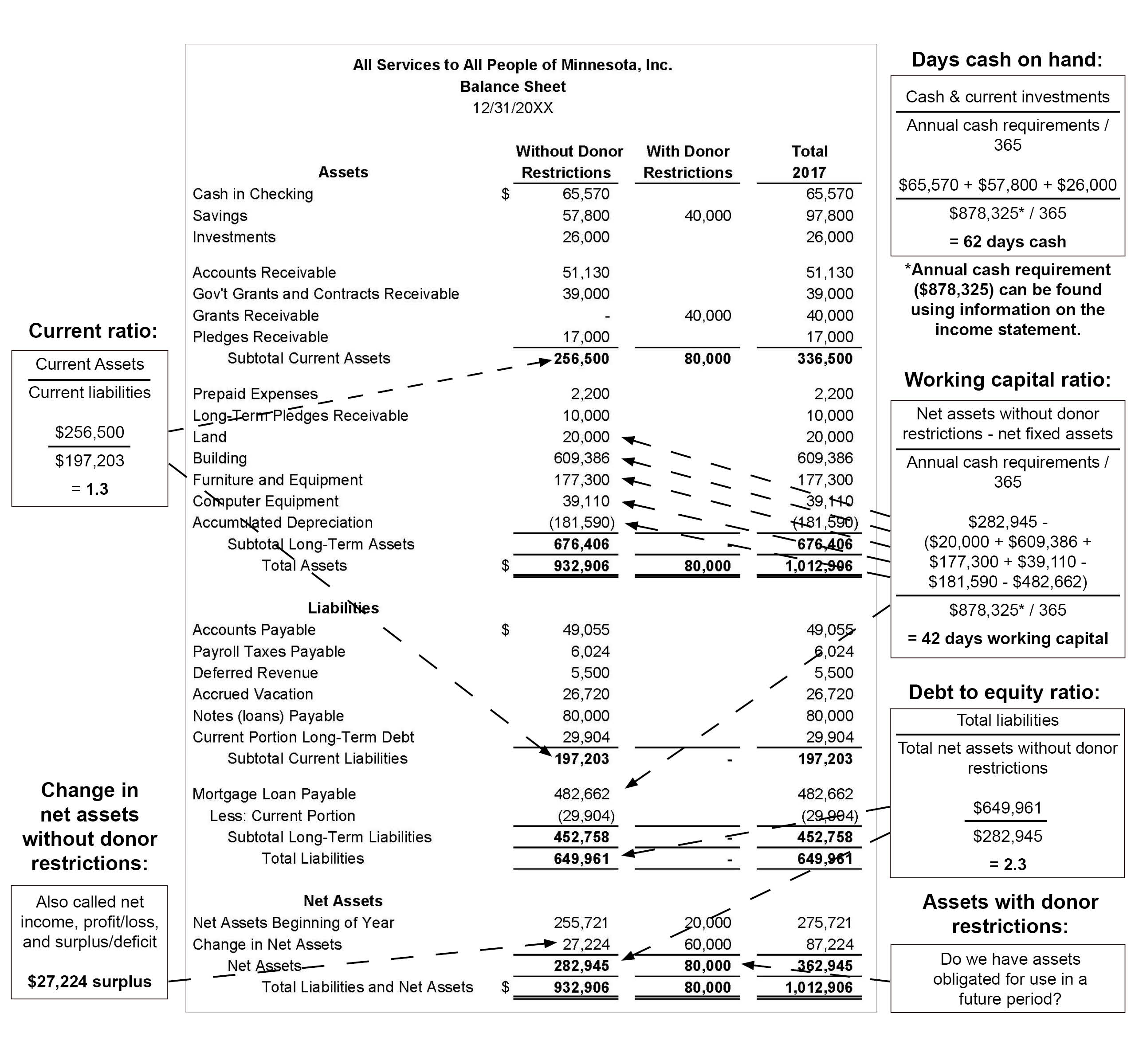Balance Sheet Cheat Sheet
The balance sheet – also called the Statement of Financial Position – serves as a snapshot, providing the most comprehensive picture of an organization’s financial situation.
Why is the Balance Sheet Important?
The balance sheet reports an organization’s assets (what is owned) and liabilities (what is owed). The net assets (also called equity, capital, retained earnings, or fund balance) represent the sum of all the annual surpluses or deficits that an organization has accumulated over its entire history. If it happened in your financial past, the balance sheet reflects it.
The balance sheet also indicates an organization’s liquidity by communicating how much cash an organization has at present and what assets will soon be available in the form of cash. Assets are usually listed on a balance sheet from top to bottom by rank of liquidity (i.e. from most easily turned into cash to those assets most difficult to turn into cash). Understanding liquidity is important to understand how flexible and responsive an organization can be.
Six Key Measures
The balance sheet has a lot of valuable information. Our Balance Sheet Cheat Sheet highlights six key measures that are useful for all types of nonprofits. Below is a brief explanation of each of these financial indicators:
Days cash on hand measures liquidity and estimates how many days of organizational expenses could be covered with current cash balances.
The current ratio measures assets that will be cash within a year and liabilities that will have to be paid within a year and can provide an indication of an organization’s future cash flow.
By filtering out the portion of total net assets that are tied up in fixed assets (i.e. assets that will likely never be converted to cash), the working capital ratio measures how much of an organization’s resources are without donor restrictions and available for current and future use.
Recognizing net assets with donor restrictions and representing them as such in financial statements is crucial so that organizational decision-makers are aware of obligations in the future.
The change in net assets without donor restrictions indicates if an organization operated the most recent fiscal period at a financial gain or loss. This line is a direct connection with and should be equal to the bottom line of an organization’s income statement (also called a Statement of Activities or profit/loss statement).
The debt to equity ratio measures financial leverage and demonstrates what proportion of organizational debt versus organizational net assets are being utilized to support the organization’s finances.
Some of the ratio calculations require information that cannot be found on the balance sheet. A few pieces may need to be found on the income statement or other financial statements.
Other Considerations
Nonprofits vary in size, structure, income reliability, and other financial aspects, which makes it inappropriate to establish a set of standards or benchmarks for most financial ratios. Nonprofit leaders should be able to articulate and understand these calculations and their relevance, as well as monitor selected measures over time to gain an accurate understanding of financial trends. Your organization is heading somewhere – do you know where?
Balance Cheat Sheet

Copyright © 2024 Propel Nonprofits
